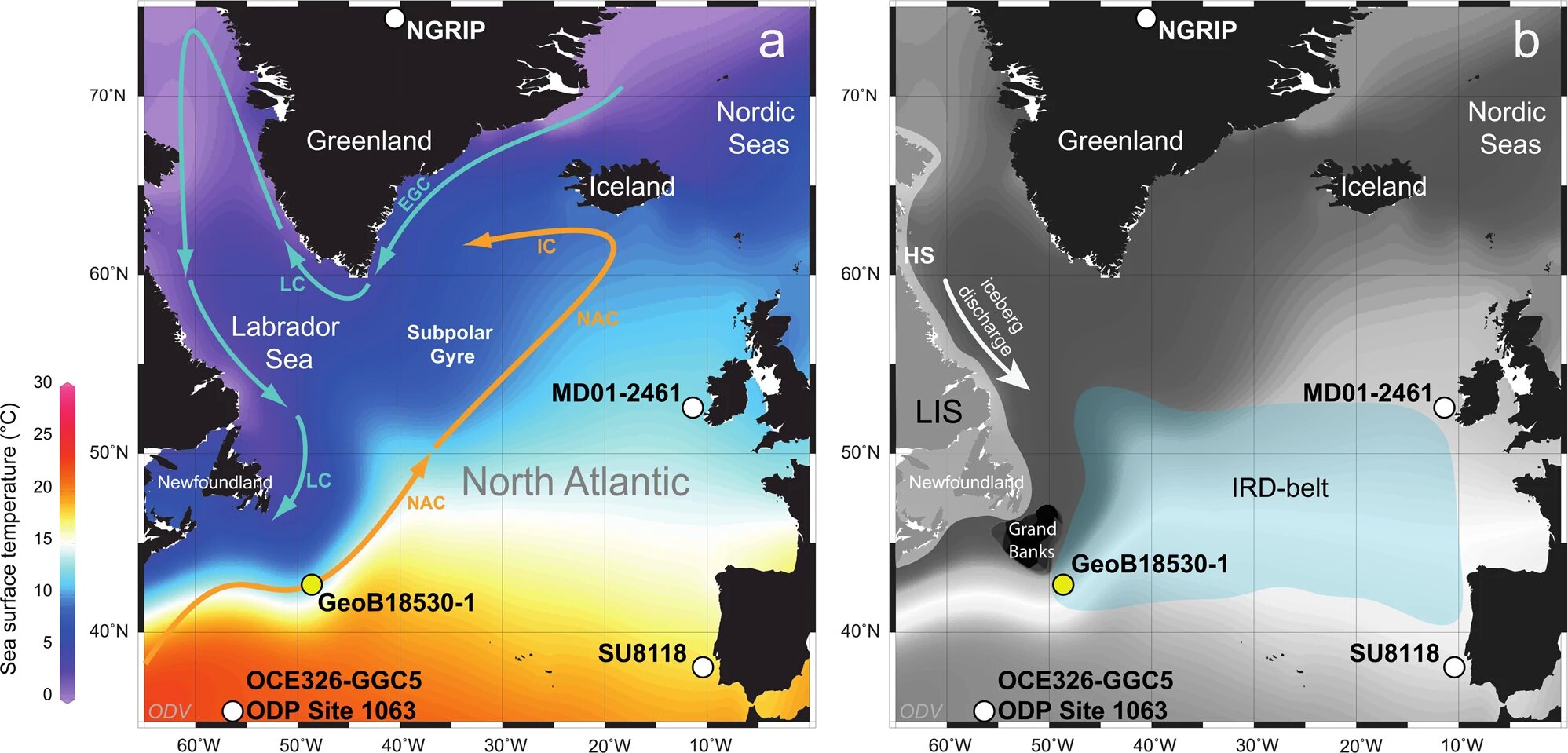
The Atlantic meridional overturning circulation (AMOC), a system of ocean currents that carry warm water from the tropics into the North Atlantic, and transport cold water from the northern to the southern hemisphere, is a fundamental mechanism for the regulation of Earth’s climate.
The conveyor belt has collapsed in the past owing to natural factors. AMOC is now threatened by global warming, scientists have shown, and a new study has discovered the sequence of past breakdown events.
The study was conducted by German researchers and Brazilian paleoclimatologist Cristiano Mazur Chiessi.
“This gigantic conveyor belt carries lighter, warmer surface water from the South Atlantic to the North Atlantic. At high latitudes of the North Atlantic, this surface water releases heat into the cold atmosphere, becoming heavier and sinking down the water column. The deeper, colder and denser water then flows southward again until it reaches the vicinity of Antarctica, where it returns to the surface, forced by an intense upwelling. On the surface, it warms up, loses density and completes the circulation,” Chiessi said.
AMOC does not only transport a huge volume of water, amounting to some 18 million cubic meters per second. It also conveys a massive amount of energy.
The researchers were able to establish the sequence of events responsible for the collapse of AMOC:
“The process begins with an apparently insignificant weakening of AMOC, which causes subsurface warming at high latitudes of the North Atlantic. This warming melts the glaciers’ sea snouts, moving the glaciers rapidly seaward and releasing colossal armadas of icebergs. As the icebergs melt, surface water salinity decreases in the region. The surface water isn’t dense enough to sink, and AMOC collapses,” Chiessi said.
Monitoring of AMOC in recent decades shows that it is weakening. There are three main reasons: intensification of rainfall at high latitudes of the North Atlantic; melting of the ice cap over Greenland; and warming of the planet’s surface. All three causes are associated with the rising levels of greenhouse gases in the atmosphere due to human activity.
This latest discovery suggests the weaker AMOC will cause anomalous subsurface warming at high latitudes of the North Atlantic, which will melt glacier sea snouts in Greenland. Ultimately, this could lead AMOC to collapse, exacerbating the climate crisis with major repercussions.